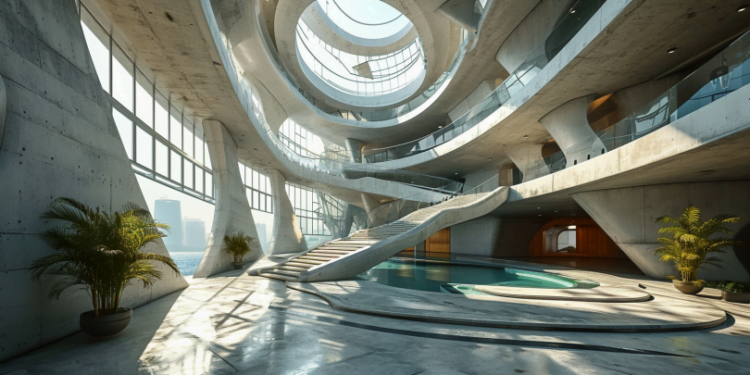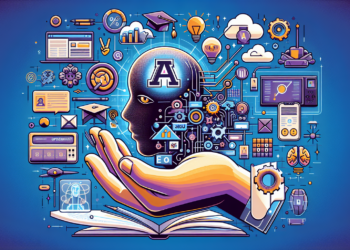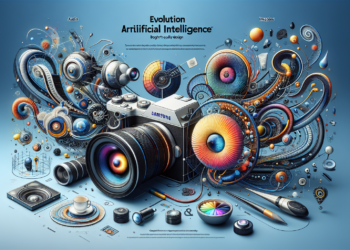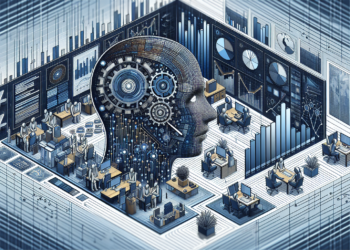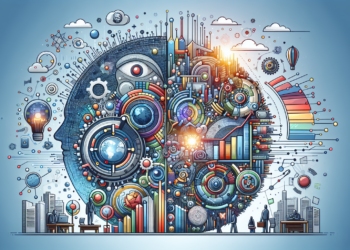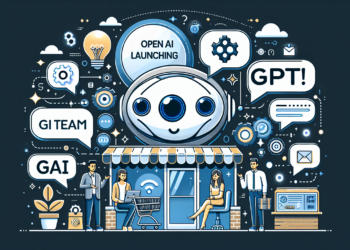Artificial intelligence has become a powerful driving force to catalyze unprecedented changes across numerous disciplines, and architecture is no exception. This article examines the implications of AI in architecture, revealing both disruptive and collaborative spheres between intelligent machines and spatial design.
Integrating AI into the Design Process
The incorporation of artificial intelligence algorithms into the architectural design process has given rise to a movement called ‘generative architecture.’ Through techniques like Generative Adversarial Networks (GANs) and topological optimization, architects can explore a vast field of formal and functional possibilities, surpassing the limitations of human imagination and experience. At the same time, AI is redefining decision-making during the conception phase, allowing rapid evaluation of the implications of numerous variables, such as sustainability, energy efficiency, and context integration.
Predictive Analysis and Simulations
The use of machine learning algorithms to predict the behavior of buildings is a notable contribution to the field. Deep learning models, trained with historical and symbolic data, can now simulate the performance of structures under different scenarios, including pedestrian flow and adverse weather patterns. These models far exceed traditional static analyses by incorporating multiple dynamic dimensions and providing more accurate forecasts.
Robotics and AI-Assisted Manufacturing
The advent of AI has taken computer-assisted manufacturing a step further into autonomous robotics. Robots, when integrated with intelligent systems, not only perform predetermined tasks but also adapt to unforeseen conditions and learn from past mistakes. This hallmark in the area of architecture is not only improving efficiency and precision in construction but also opening doors to new construction methods and innovative materials.
Mass Customization and User Engagement
Through machine learning, it is possible to analyze large datasets about human preferences and behaviors, allowing for large-scale customized designs. This represents a qualitative leap in the way architecture responds to individual and collective needs. AI can identify patterns in user demands and facilitate the mass customization of homes and other spaces, heralding a new paradigm of adaptability and user engagement.
Predictive Maintenance and Operations
AI has also revitalized building lifecycle management through predictive maintenance. Using IoT sensors and big data techniques, intelligent systems can detect structural anomalies or system failures before they occur, optimizing building performance and reducing maintenance costs. This proactive approach contrasts radically with the traditional reactive methods.
Ethical and Regulatory Challenges
With AI come significant ethical and normative considerations. The autonomy of intelligent systems raises questions about privacy and data security. Concerns also emerge about standardization in decision-making and the potential devaluation of human judgment when AI provides design recommendations.
The Future of AI in Architecture
Looking to the future, innovations in the human-machine interface are anticipated, further expanding co-creation and co-evolution between architects and artificial intelligence. The incursion of AI in architecture could lead to the formation of a new design language that blurs the boundaries between nature, humanity, and technology, aligning human creativity with the precision and speed of machines.
Recent case studies demonstrate the practical application of these principles. Projects such as The Edge in Amsterdam, using smart technology to achieve nearly perfect energy efficiency, or the Morpheus Hotel in Macau, where complex forms were made possible thanks to algorithmic optimization, are tangible examples of how AI is already reshaping architecture.
In summary, the integration of artificial intelligence into architecture not only redefines the methods of design and construction but also raises fundamental questions about the role of the architect in a world where machines not only assist but collaborate and sometimes decide. The impact of AI on architecture is profound and multifaceted, offering both exciting possibilities and significant challenges that deserve ongoing reflection on the direction and ethics in the use of these emerging technologies.

